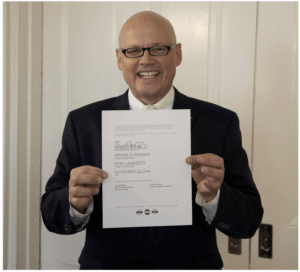Miami University (OH) Commits to a Sustainable Future on the Autumn Equinox
On September 22, 2020, the first day of autumn, an equinox occurred marking when the sun passed directly over the earth’s equator. Prior to and after today, day and night times will be uneven, but for today, day and night time will be equal in length. This image of balance is fundamental to a new way to look at how human activity and care of the Earth needs to occur–with a balanced approach that does not result in unevenness that could tip the balance and bring harm to everything and everyone-especially the most vulnerable.


Within that context, Miami University’s President Greg Crawford signed the Second Nature’s Presidents’ Climate Leadership Commitments (PCLC) in a virtual ceremony at noon. This event was originally planned for Earth Day in April, but COVID-19 changed those plans. The virtual event was attended by nearly 100 people, including co-Chairs Helaine Alessio and Suzanne Zazycki and members of the University’s Sustainability Committee, the newly initiated Climate Action Task Force co-chairs Adam Sizemore and Jonathan Levy and its members, Oxford’s Mayor Mike Smith, Assistant City Manager, Jennifer Greene, and Tim Carter, President of Second Nature, which manages the PCLC. With today’s signing Miami University joins more than 400 other colleges and universities that have commited to the PCLC for carbon neutrality. By signing the Climate Commitment, Miami commits to the most comprehensive of commitments which includes resilience (adapt to impacts of climate change through campus and community engagement) and carbon commitment (commit to reducing greenhouse gas emissions) in its goal to achieve carbon neutrality as soon as possible. Campus and community engagement include increasing awareness, accessibility, and behaviors related to active transportation (increase walking and biking trails), fuel usage (eliminating coal burning on campus since 2017) energy conservation (build LEED certified buildings on campus, use energy efficient vehicles), reducing waste, reusing and recycling. The ultimate goal is that greenhouse gas emissions that occur from human activities will decrease at a rate and to levels that will keep an increase in the average global temperatures to less than 2.0°C, and preferably 1.5°C compared with pre-industrial average temperature levels. The big-picture outcome will likely reduce the number and intensities of wildfires, hurricanes, and flooding that have ravaged many parts of the world, including our country. Other outcomes include sustaining the homes and livelihoods of people of all backgrounds and communities, so they do not become vulnerable to being displaced or worse as a result of climate-induced disasters. Balance is on the minds of many of us today as we celebrate the autumn equinox and take action and encourage others to do the same to sustain us all on our favorite planet. Dr. Helaine Alessio is an active Climate for Health Ambassador, having completed her training through the Climate for Health partnership with the American College of Sports Medicine. To learn more about the Climate for Health Ambassadors Program: climateforhealth.org/ambassadors-training/